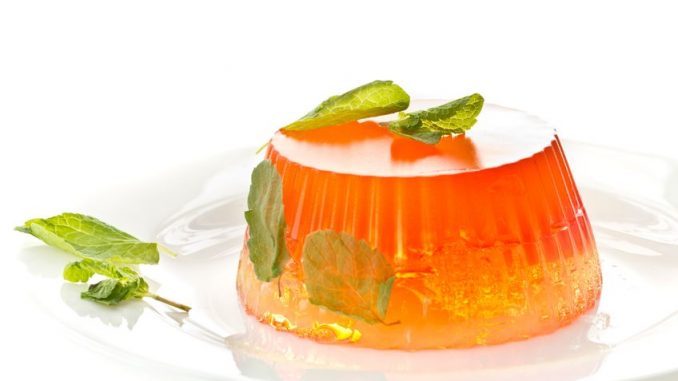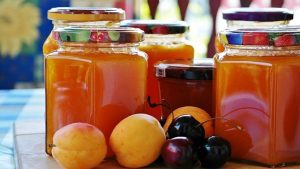
Syneresis in food science occurs when a liquid such as water is expelled or extracted from a gel. It is highly undesirable. When you open a yogurt pot for the first time it very often looks a pleasing white homogenous mass. Leave it in the fridge overnight and come back to it, you very often see a white milky layer on top.
Syneresis is a major concern for product developers as it is a quality issue. It is unsightly for a start and can spoil the look of a food product.
A Brief Look At Gels
Gels are a three-dimension network of polymers which are very large molecules. To construct the gel the polymers cross-link with each other and in the process, bind and trap water into their structure. If they are not disturbed, that water remains in place. The more entanglement there is, the more tightly bound the water molecules will be. Unfortunately, there are a number of conditions which undo this tight structure or at least cause water to move out of the gel. The goal for a product developer is to find ways and means to prevent this and least manage the phenomenon.
Gels are formed from proteins and carbohydrates which are polymers or large macromolecules. We often use these polymers to produce a jam as with pectin or a yogurt as with milk whey proteins. Both these foods often experience syneresis. The type of foods affected also include jellies, other dairy products, surimi, juices – especially tomato juice, sauces, meat, soybean curds and indeed all curds. I’m sure you could keep adding to this list.

History Of Studies Into Syneresis
Syneresis enters common parlance when Graham coins the term in 1864. He was examining jellies which broke up when they were left for awhile or when disturbed. In his case, the jelly stopped being ‘one homogenous mass’ and split into solid lumps surrounded by a thin liquid. The same phenomenon from then on is also used to describe serum separating from clotted blood and splitting of sour milk into curd.
Kunitz (1928) at the The Rockefeller Institute for Medical Research Princeton, N.J. USA discusses ideas put forward by those such as Ostwald (1917). Ostwald thought syneresis was a separation of phases. Gelatin, from which we obtain the shortened word, gel, was often studied as a model solution for both gelling including syneresis.
The Chemistry Of Syneresis
The chemistry behind the phenomenon lies in polymer and colloidal science (Mizrahi, 2010). Polymer solutions and the gels formed from them have been examined by comparing the theory with a number of practical and experimental examples. When colloidal science is examined, it concerns changes in the porous system of particulate gels. This approach looks at the forces occurring as polymers rearrange in a gel.
The gel will often contract spontaneously as the polymers making the gel shrink or alter their conformation. As a result, water is expressed or expelled from the pores.
The rate of gel contraction is dependent on the size of the gel formed. The small pores resist the flow of liquid from out of the gel (Scherer, 1989). The mechanics of syneresis have been examined in some detail.
One of the ways to prevent syneresis is to increase the osmotic pressure of the gel such as increasing the gel polymer concentration. Also, decreasing the network pressure. This means managing the cross-linking of polymers in the gel by controlling the gel-setting conditions. For particulate gels, this means increasing the level of cross-linking using chemical modification to minimize the effects of phase transition.
Starches are very often added to foods including gels to reduce syneresis. They not only stabilise and thicken foods, they also modify texture. Cheesecakes for example often have starch added to thicken them and reduce water expression as a result of chilling which induces syneresis.
Overheating is an issue which leads to syneresis. Cooking a rare juicy steak too much and it dries it with some moisture being expressed that is evaporated off during let’s say the frying process.
One positive aspect of syneresis occurs in cheese making. Here a curd forms when there is a rapid movement of hydrophilic proteins out of the system. The other one is agar clarification for producing consommés and clear soups. In this case, when agar is added to a juice or stock, it turns into a gel. The gel is broken with a whisk and the liquid is removed by draining it off through a mesh or sieve. All the solid particulates that were in the stock are trapped in the agar gel. The liquid is left clear as a bell.
References
Kunitz, M. (1928) Syneresis and swelling of gelatin. J. Gen. Physiol. 12(2) pp. 289-312
Man, D. (2015). Shelf life. John Wiley & Sons. 2nd edt.
Mizrahi, S. (2010) Chapt. 11 Syneresis in food gels and its implications for food quality. In: Chemical Deterioration and Physical Instability of Food and Beverages. Woodhead Publ. Series Food Sci. technol. Nutr. Pp. 324-348 (Article)
0stwald, W. (1917) An introduction to theoretical and applied colloid chemistry. New York, 1917, pp. 93
Scherer, G.W. (1989) Mechanics of syneresis I. Theory. J. Non-Crystalline Solids. 108 (1) pp. 18-27 (Article)